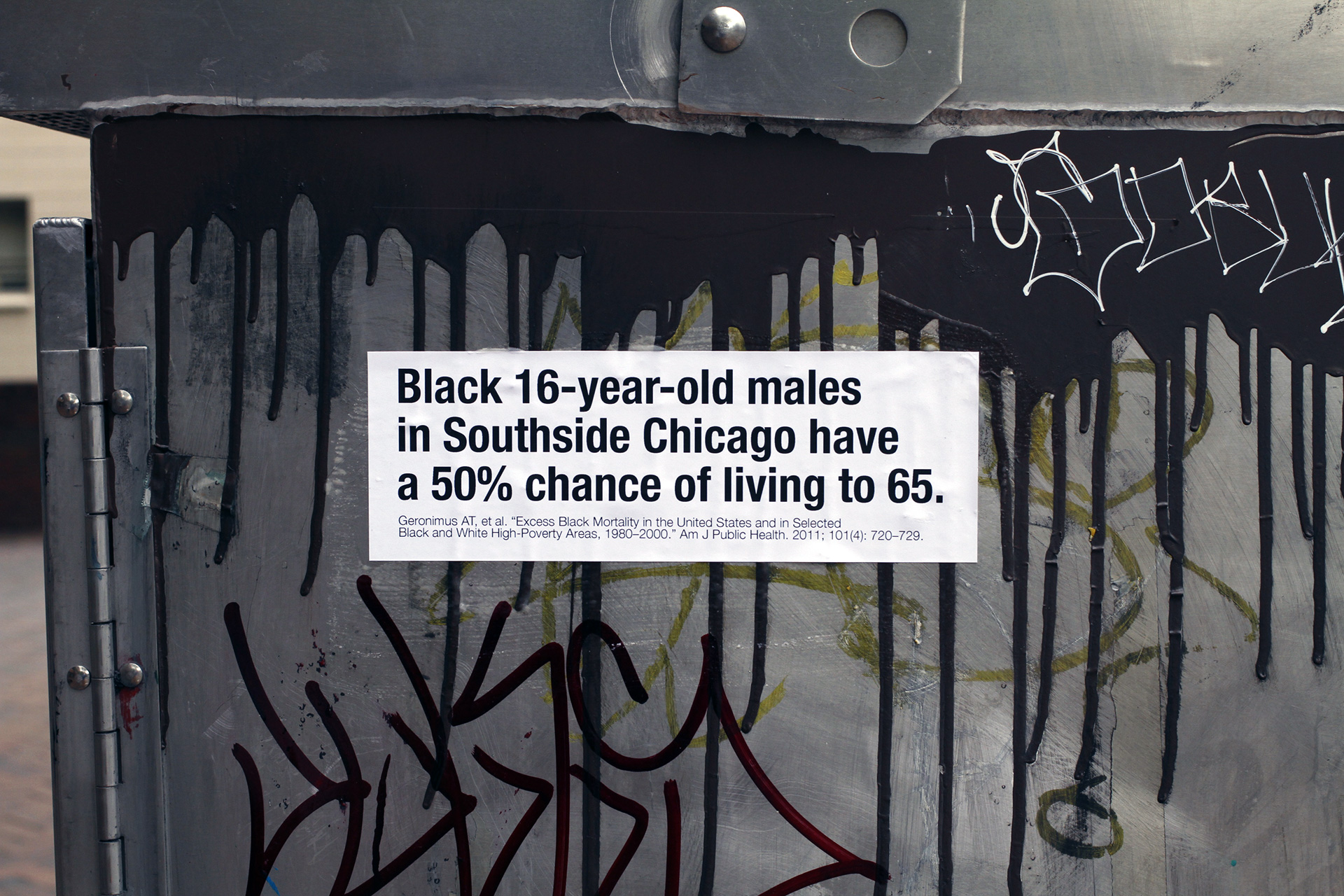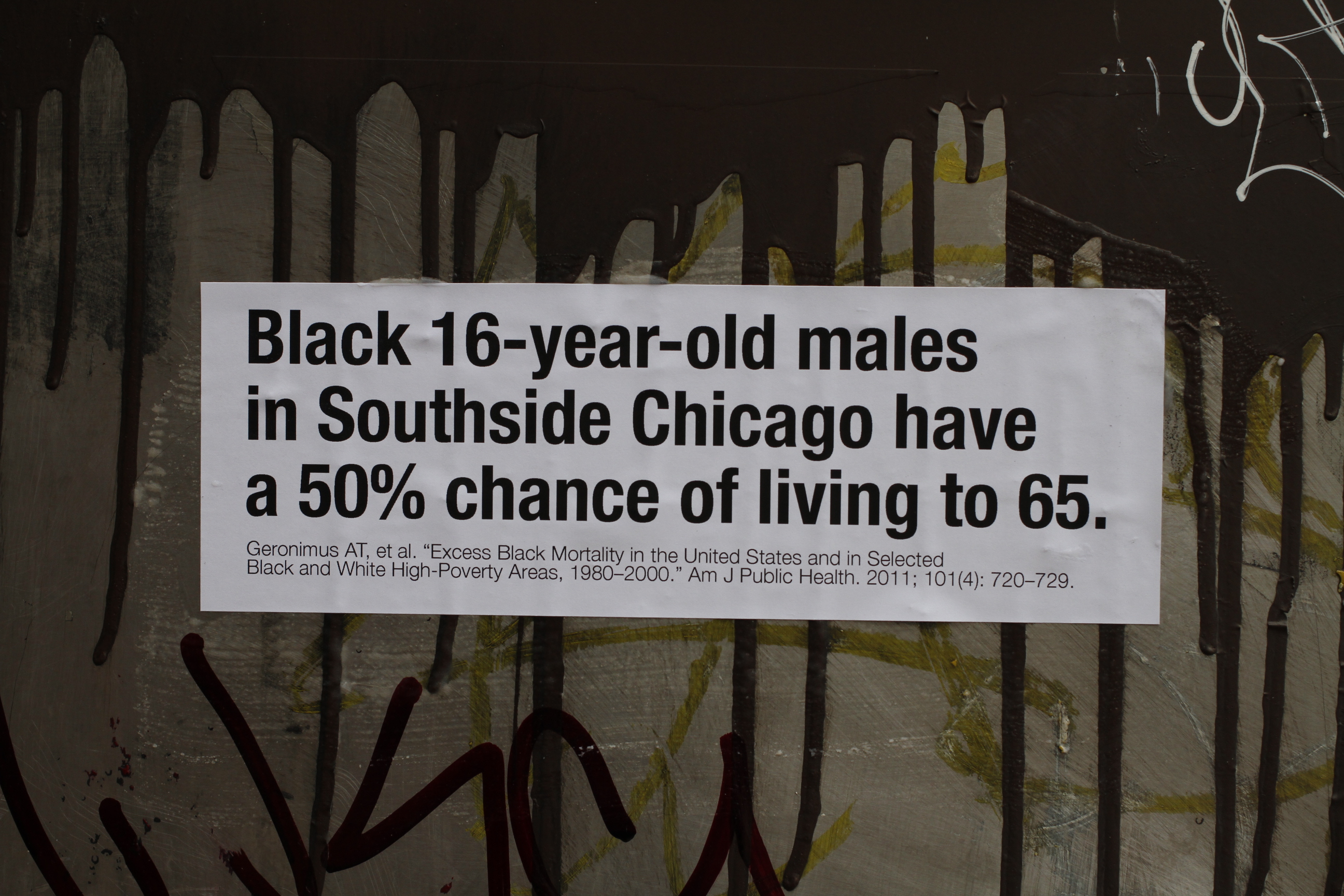In 1996 Geronimus, et al, published a landmark paper examining variations in early mortality across different locales in the United States. Following on a paper by McCord that estimated black men in Harlem faced worse life expectancy than men in Bangladesh (an extremely poor country), she and co-authors used death certificates from eight impoverished American areas (and eight geographically close but advantaged areas) to look at racial mortality in America. The results were bleak. Teenage boys in Harlem had only a 37% chance, on average, of living to see 65.
The paper demonstrated astounding variability in outcomes across the United States, and at the same time variability in what might be driving such outcomes.
Our results show that there are important differences among impoverished communities in patterns of mortality. The data suggest that reducing excess mortality may require interventions that address local conditions and mortality risks. For example, our findings underscore the need for interventions to reduce the incidence of diseases of the circulatory system in all the locations examined, but they suggest that HIV, homicide, and accident prevention need to be emphasized differently in different places.
Our findings are generally consistent with the association between race and excess mortality in the United States that is often reported. However, the poverty rate and the location of a group (urban and northern vs. rural and southern) are also important. White residents of Detroit fared as poorly as residents of some black areas that we studied. One black comparison group (that in Queens–Bronx) had a mortality rate only slightly higher than the national average for whites.
The data we obtained in Harlem and Black Belt Alabama highlight the importance of accounting for social factors that are not represented in typical measures of socioeconomic status. Black Belt Alabama had the lowest excess mortality of the poor black groups, although it had the highest rate of poverty, whereas Harlem had the highest excess mortality but the lowest poverty rate. These findings remained valid after adjustment for cost-of-living differences between the rural South and the urban North.
In 2011, Geronimus and two other co-authors (one of whom co-authored the 1996 paper) reprised the prior analysis, this time looking at new data in the years since to see if conditions had improved. The story is one of good and bad news: “Urban men’s mortality rate estimates peaked in 1990 and declined between 1990 and 2000 back to or below 1980 levels.” Rates peaked in 1990, and by a decade later they had gone down — that’s good news. Unfortunately they only dropped to their 1980s levels, which means that it would perhaps be fair to say, ‘comparing 1980 outcomes to those twenty years later, no overall progress can be seen.’ One would hope that in a world where outcomes are so dependent on the fruits of science and technology, on social and economic development, that in a 20 year period in a wealthy nation, the fruits of these sectors would improve lives (as measured by who lives and who dies).
“Yet, the extent to which economic growth affected residents of segregated urban communities varied by race and gender, with low-skilled Black men, in particular, being “left behind.” For poor mothers, Aid to Families with Dependent Children was replaced with Temporary Assistance to Needy Families, establishing lifetime limits, setting stringent work requirements, and reducing Medicaid enrollments. Studies revealed that Temporary Assistance to Needy Families participants expressed pride in employment but reported exhaustion and chronic anxiety, with possibly adverse health implications. Poor Black individuals faced additional challenges to accessing medical care in the context of a more privatized, market-based health care delivery system; the movement of private practitioners out of the inner city; and lack of health insurance for the working poor. Gentrification may have reduced the presence of inner-city federally qualified health centers. Antiretroviral treatment was less available to high-poverty populations than to more advantaged groups.”
In particular for Chicago, the stat quote in the image below does not seem to have gotten much better in the five years since Geronimus’ second study. For 2016, Chicago’s murder rate has already risen 72% over last year’s.



